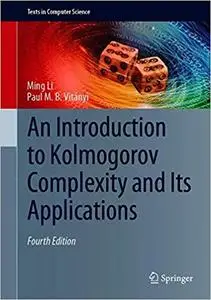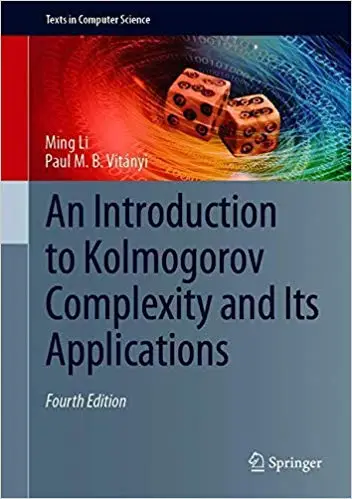Ming Li, "An Introduction to Kolmogorov Complexity and Its Applications Ed 4"
English | ISBN: 3030112977 | 2019 | 834 pages | PDF | 8 MB
English | ISBN: 3030112977 | 2019 | 834 pages | PDF | 8 MB
This must-read textbook presents an essential introduction to Kolmogorov complexity (KC), a central theory and powerful tool in information science that deals with the quantity of information in individual objects. The text covers both the fundamental concepts and the most important practical applications, supported by a wealth of didactic features.
This thoroughly revised and enhanced fourth edition includes new and updated material on, amongst other topics, the Miller-Yu theorem, the Gács-Kučera theorem, the Day-Gács theorem, increasing randomness, short lists computable from an input string containing the incomputable Kolmogorov complexity of the input, the Lovász local lemma, sorting, the algorithmic full Slepian-Wolf theorem for individual strings, multiset normalized information distance and normalized web distance, and conditional universal distribution.
Topics and features: describes the mathematical theory of KC, including the theories of algorithmic complexity and algorithmic probability; presents a general theory of inductive reasoning and its applications, and reviews the utility of the incompressibility method; covers the practical application of KC in great detail, including the normalized information distance (the similarity metric) and information diameter of multisets in phylogeny, language trees, music, heterogeneous files, and clustering; discusses the many applications of resource-bounded KC, and examines different physical theories from a KC point of view; includes numerous examples that elaborate the theory, and a range of exercises of varying difficulty (with solutions); offers explanatory asides on technical issues, and extensive historical sections; suggests structures for several one-semester courses in the preface.
As the definitive textbook on Kolmogorov complexity, this comprehensive and self-contained work is an invaluable resource for advanced undergraduate students, graduate students, and researchers in all fields of science.



